Also available in: Deutsch
Chantaburi is a city and eponymous province in the east of Thailand. It is located only about 245 kilometers from Bangkok and is definitely an insider tip away from the well-known tourist destinations in Thailand.
Along the coast of the Gulf of Thailand lies this very fertile region. In Thailand, it is particularly known for its fruits, the woven Chantaboon mats, and its occurrence of gemstones.
Chantaburi – Between Fruits, Gemstones, and Woven Mats
But even beyond these three things that have made this city and province in Thailand so well-known, there are other noteworthy highlights in this scarcely developed tourist province.
Accommodation in Chantaburi – Our Hotel Tip
With an ideal location for exploring Chantaburi, the Kasemsarn Hotel awaits its guests. It is essentially located in the old town of Chantaburi, just a few minutes’ walk from the Chantaburi Waterfront, the Catholic church, or the night market. The rooms are clean and, of course, offer air conditioning. The friendly staff also make your stay in Chantaburi very pleasant, and we felt very comfortable.
You can find more accommodations, such as guesthouses and hotels, in Chantaburi here.
1. Fruits (Durian, Mangosteen, Rambutan)
Chantaburi is particularly famous in Thailand for its tropical fruits. The Durian stands out in particular, and not without reason does this fruit bear the nickname “King of Fruits.” Since every king also needs a queen, there is the Mangosteen – the “Queen of Fruits.”
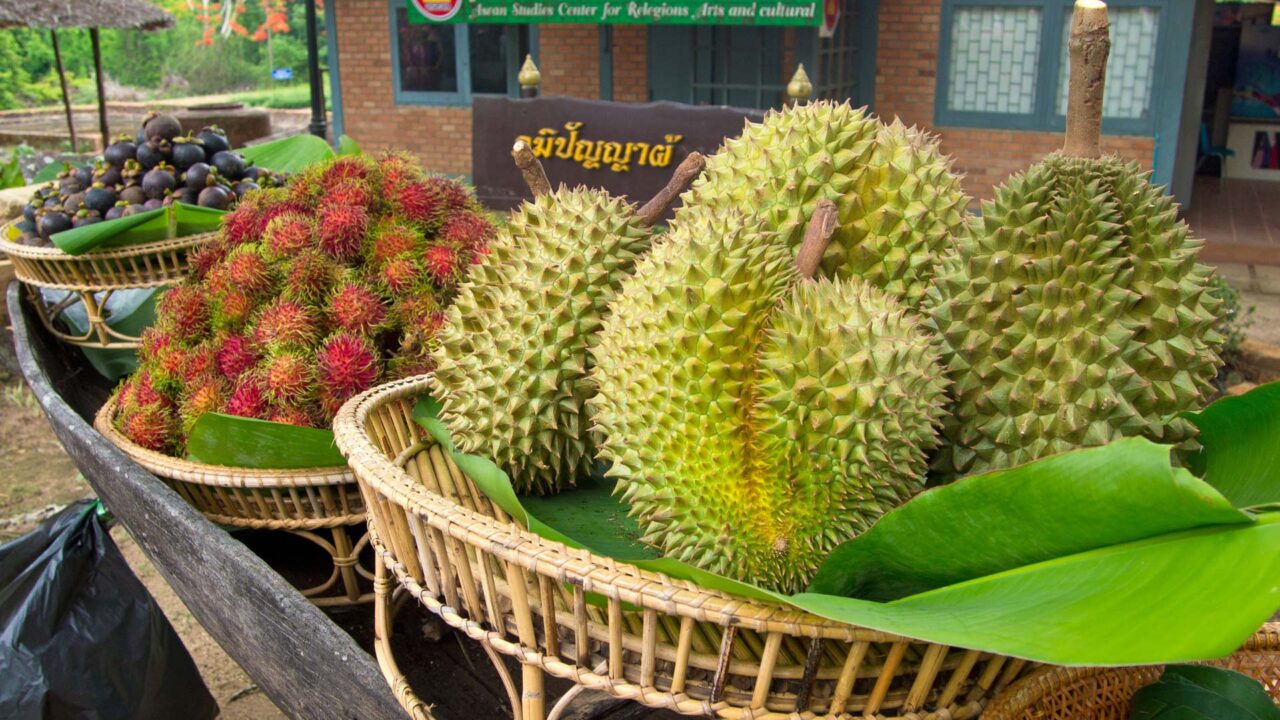
But it’s not only Durian and Mangosteen that are found in abundance in the province of Chantaburi; the delicious fruit Rambutan is also widely available. These fruits grow very frequently in this fertile region and are then exported and sold throughout the rest of the country.
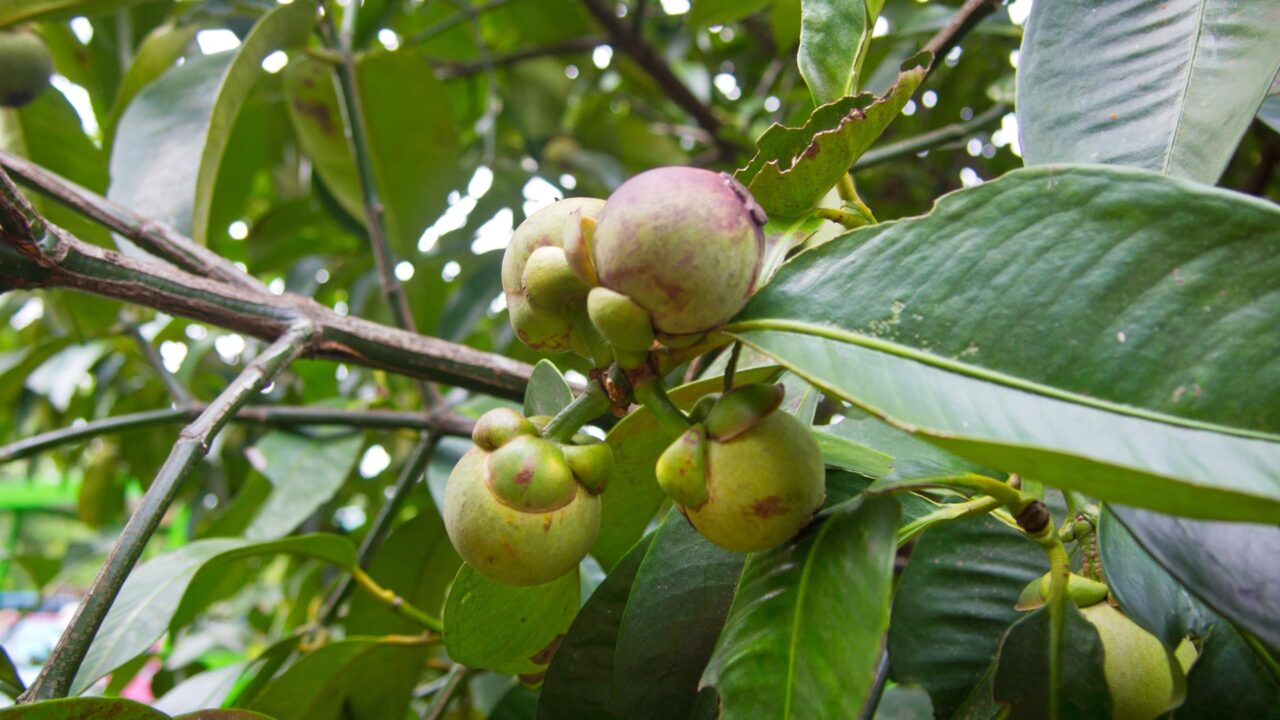
By the way, Durian and Mangosteen are often eaten together because Durian increases body temperature, while Mangosteen brings it back down. A good combination indeed.
Durian, also known as the “stinky fruit,” is very popular in Asia, but for European tastes, it takes some getting used to. Since it’s difficult to buy in Europe, you should definitely give it a try whenever you get the chance.
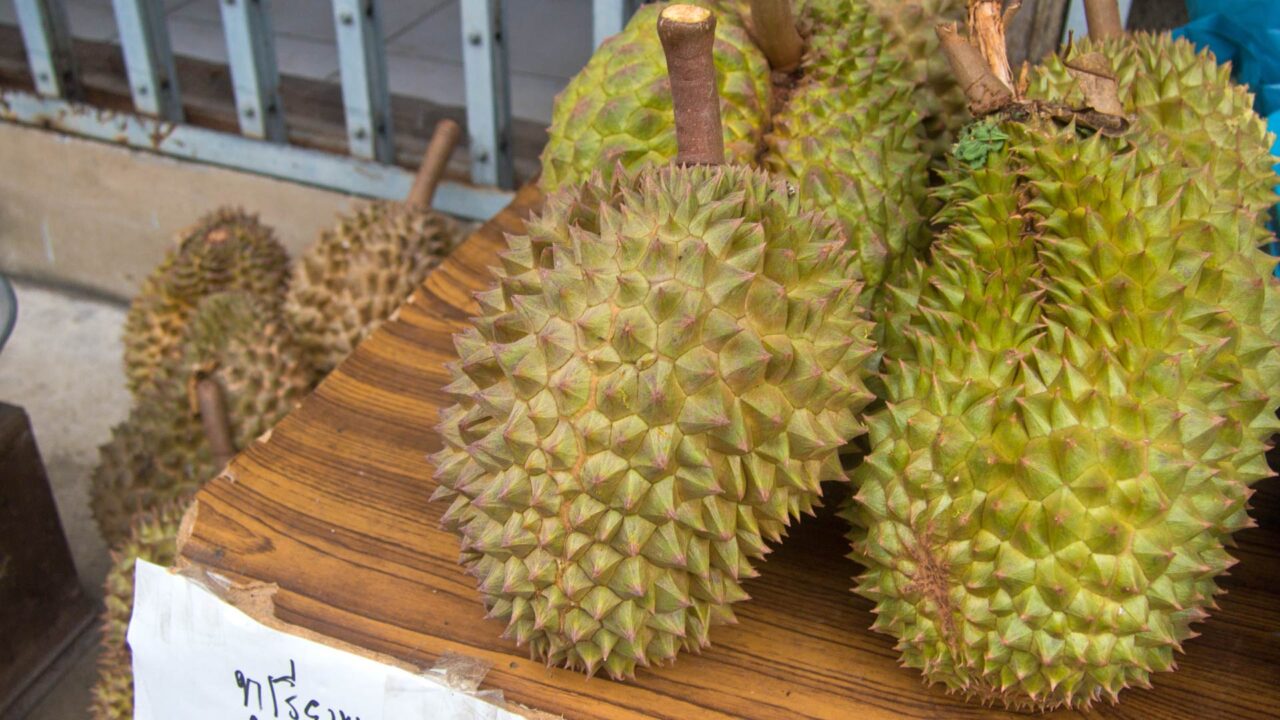
If you take a trip to Chantaburi, you will find Durian, Mangosteen, and Rambutan for sale everywhere. Why not grab a few of these delicious fruits and give them a try? But be careful – Durian is not allowed in many hotels because of its smell.
Durian also divides people into Durian-lovers and Durian-haters. It’s rare to find someone who thinks the fruit is just okay. Which side are you on?
2. Chantaboon Mat Handicraft Center
Chantaburi is not only known for its fruits, but also for the mats made from reed that you will find in many Thai households. They are also often used as seating at the beach and at home as a base for meals when sitting together on the floor.
There are, of course, multiple places in Thailand where these mats are made, but Chantaburi is very well-known for its Chantaboon mats. About 7 kilometers from Chantaburi’s city center lies Ban Samet Ngam. At the Chantaboon Mat Handicraft Center located there, many of the mats and other products are handcrafted.
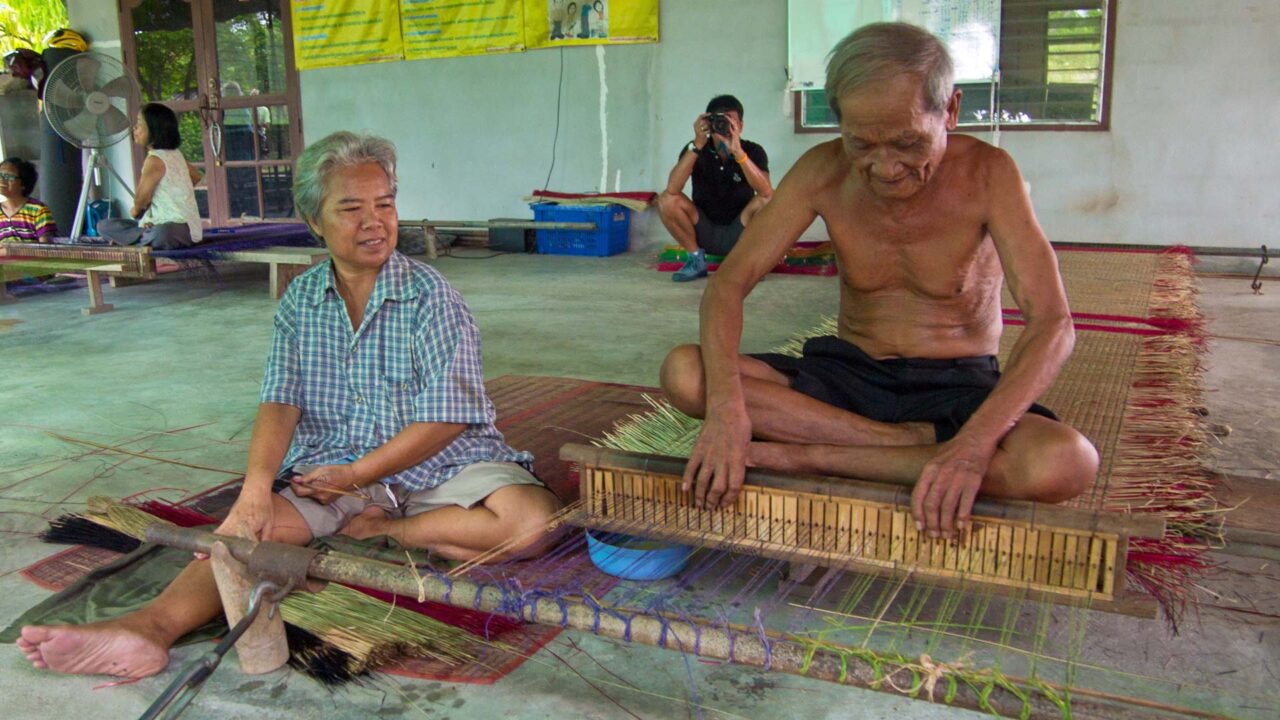
When the villagers have finished harvesting their rice, they turn to the production of Chantaboon mats. During a visit to the Chantaboon Mat Handicraft Center, you can take a look at the entire process.
In the beginning, of course, the reed (called Kok in Thai) must be harvested, which can happen up to 3 times a year. After that, the reed is soaked in water for 1 day and then cut into 3-5 pieces, depending on the quality of the reed and how many pieces can be obtained from it.
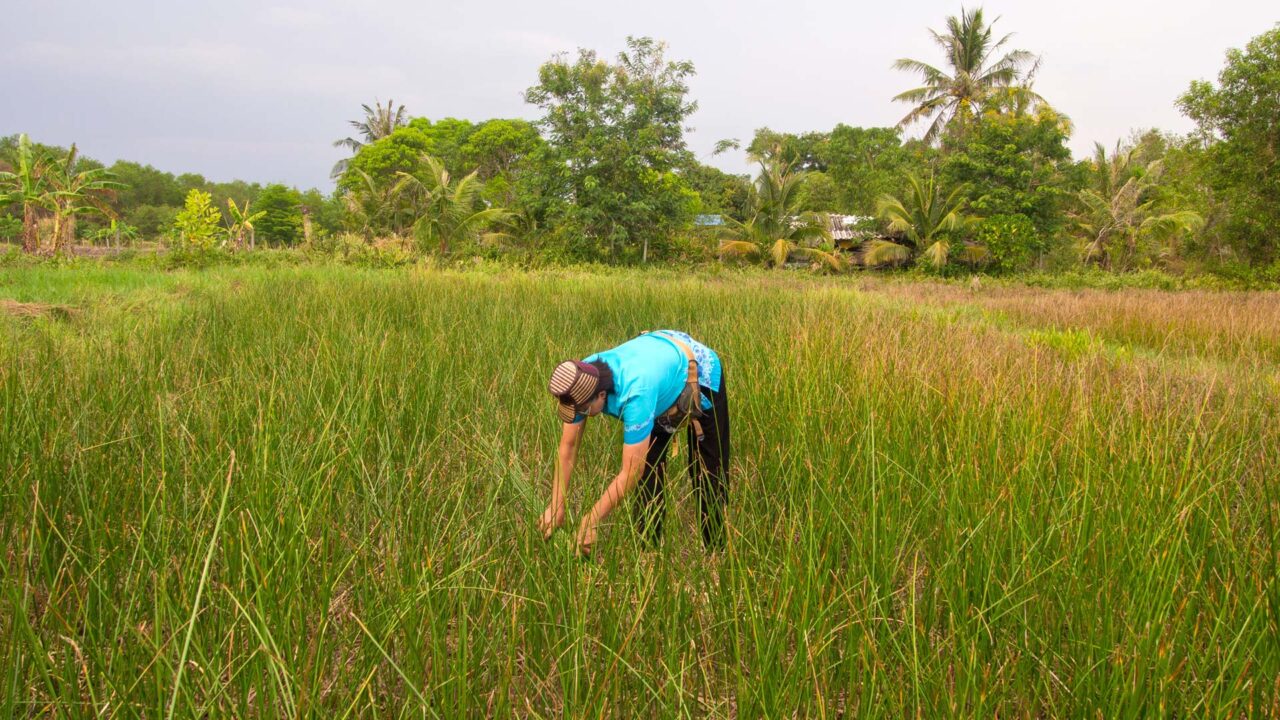
After cutting, the individual pieces of reed are dried in the sun for 3-5 days before they are dyed. The individual strands are dyed in different colors in order to weave various patterns.
Dyeing takes only about 10 minutes, but after that, the reed needs another 2 days to dry.
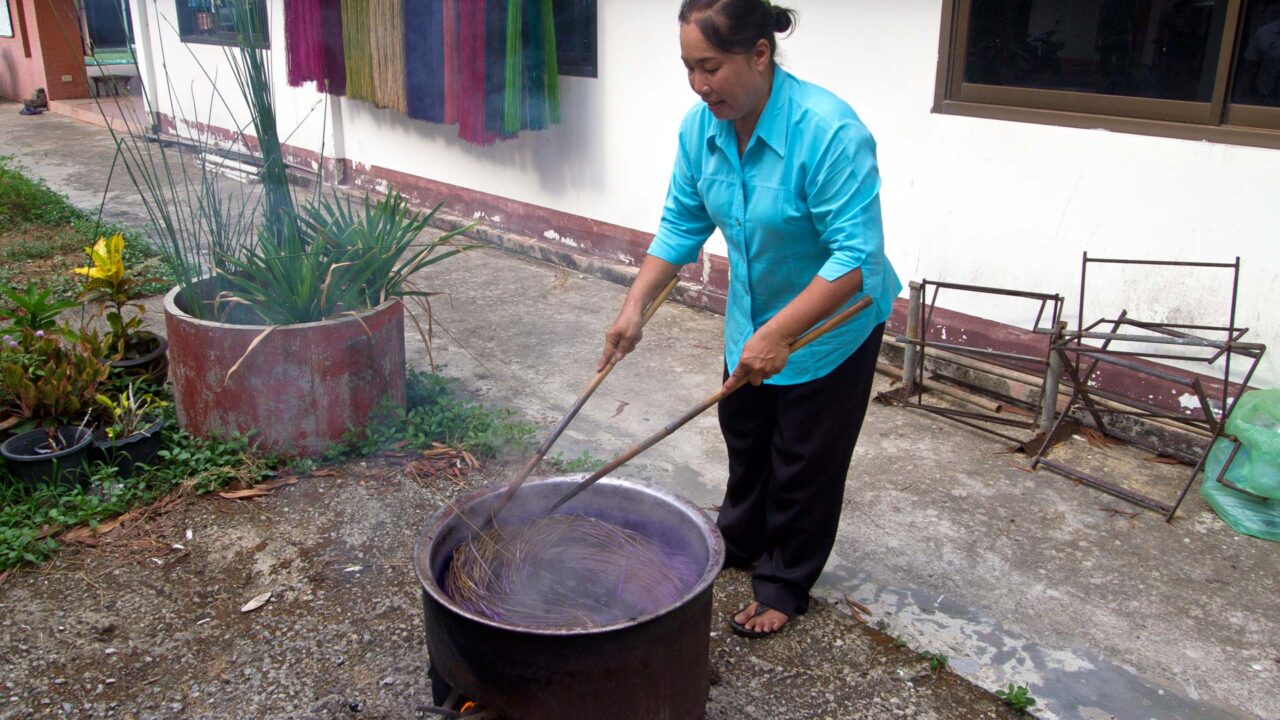
Now the mats can be woven. Two people always weave one mat together. On average, about two mats per day are produced by two people, which are then sold for 600 Baht per mat.
But many other products, such as shoes, bags, chopstick holders, etc. are also produced at the Chantaboon Mat Handicraft Center.
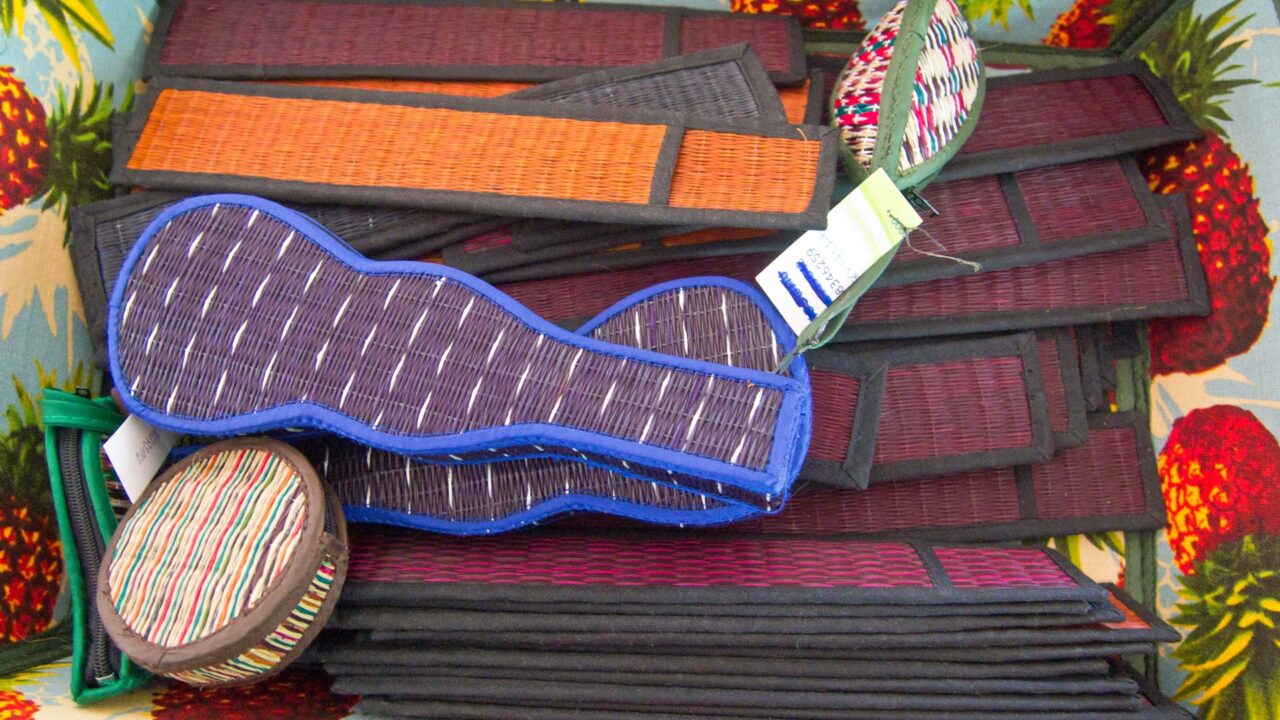
It is open Monday to Friday from 8.30 AM to 4.30 PM. There is no admission fee, but if you would like to support the locals and their production a bit, you can buy one of the handcrafted products at a very reasonable price at the end. Also, a great souvenir for home.
3. King Taksin Shipyard
Also in Ban Samet Ngam, just a few meters from the Chantaboon Mat Handicraft Center, there is a monument for King Taksin’s shipyard in the form of a temple.
It is believed that this place served as a shipyard for King Taksin and that he prepared his units here in 1767 for the liberation of Ayutthaya.
In addition, there is a small warehouse nearby where miniature versions of ships that were once used by the people are on display.
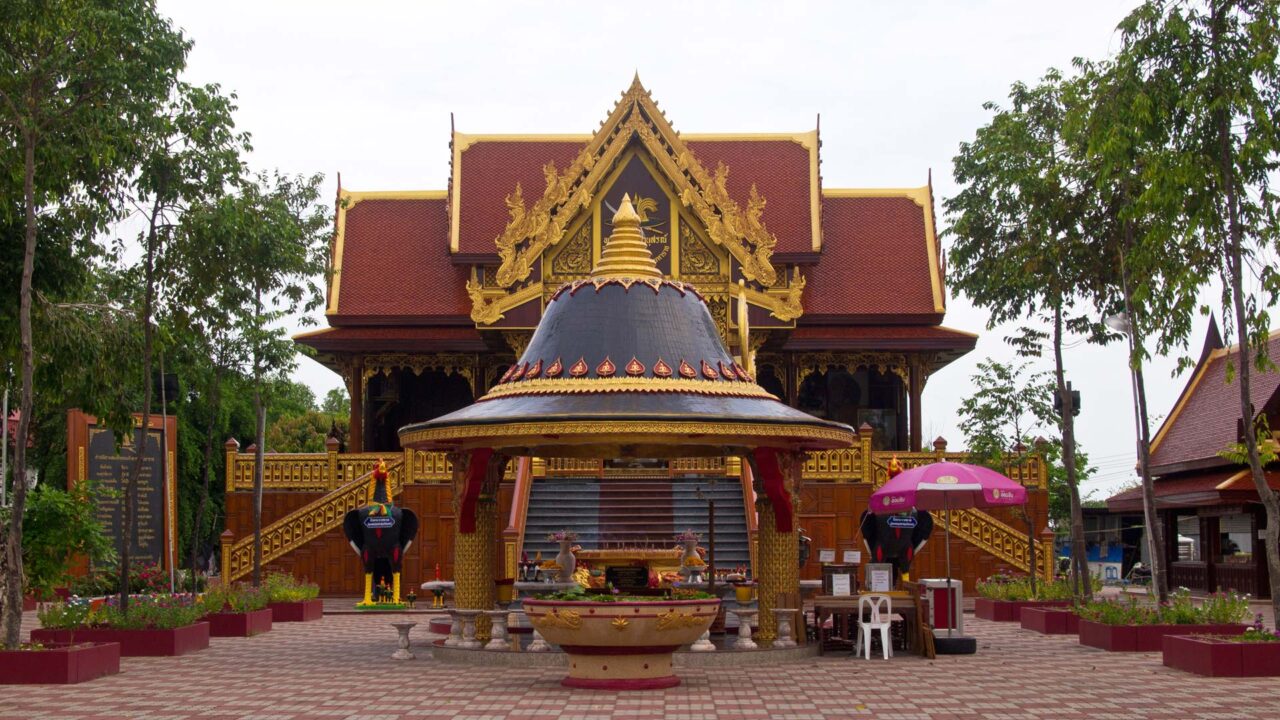
The building in memory of King Taksin is beautifully designed and still relatively new. The grounds are currently still being expanded, so that construction work is not yet fully completed.
To get to know the whole story a bit better, you can visit the local museum, which presents the history as well as shipbuilding and the development of Chantaburi Province.
Opposite the temple-like building, there is also a small harbor where decommissioned warships are moored that you can view.
If you take a look at the mat weaving at the Chantaboon Mat Handicraft Center, be sure not to miss a visit to the King Taksin Shipyards.
4. Chantaburi Beaches
Travelers in Chantaburi Province can also spend a few days by the sea here. About 30 kilometers from the provincial capital, there are several beaches. The Haad Chao Lao is the most popular. It is about three kilometers long and slopes very gently into the sea.
Even if you can’t expect a paradisiacal white sandy beach here, the water is absolutely gorgeous. Crystal clear, no stones in the water, and it’s also perfect for children because the water is very shallow.

Besides Haad Chao Lao, there are two more beaches a bit further north. For example, there is the Haad Laem Sadet. This beach is about one kilometer long, and the water gets deeper as it goes out into the sea. It is therefore somewhat better suited for swimming. Even here, the sand is not dreamily white, but the water is still very beautiful.
A bit further north lies the Haad Kung Wiman. A small bay surrounded by rocks, where you can often be alone. This beach is also suitable for swimming.
All of these beaches are relatively secluded, as they are mostly visited by Thai tourists, who very rarely go out in the blazing sun.
5. Gems Market
Chantaburi, as mentioned in the introduction, is also known in Thailand for its gemstones. Spread throughout the city, there are many small shops where you can buy gemstones and even small studios where you can polish your own stone.
On weekends, the Si Chan Road in the city center comes to life when the local gemstone or Gems Market takes place. From 9.00 am to 6.00 pm, bargaining and trading take place here. An experience you shouldn’t miss if you visit the city on a weekend.
Here you can find all kinds of gemstones. Rubies, sapphires and much more. If you’re looking for a great souvenir for your loved one, then you’re in the right place!
6. Wang Suan Ban Kaeo
For about 18 years (between 1950 and 1968), this was the royal residence of Queen Rambhai Barni. On the grounds, you will find, for example, the gray house (Phra Tamnak Yai), in which the Queen resided and where royal receptions were held.
You can also visit the red house (Phra Tamnak Don Khae), which today is used as a local museum.
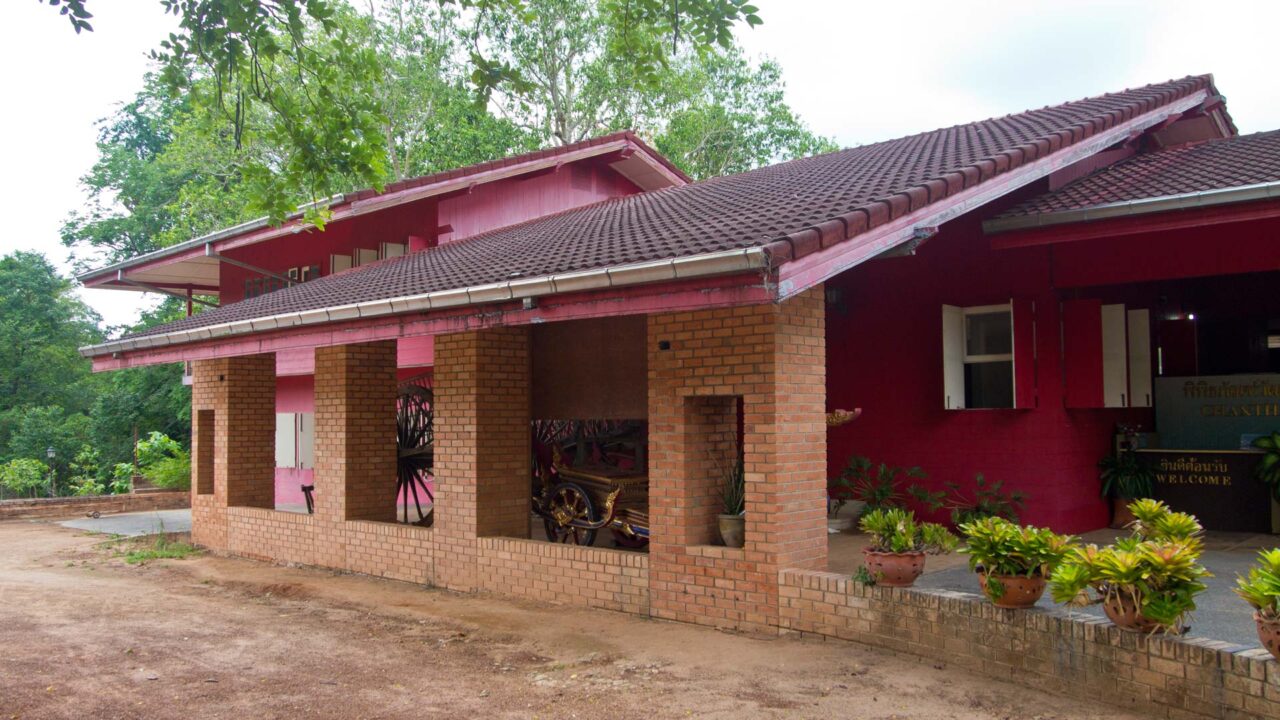
In 1972, the Queen donated the land to the Ministry of Education in order to increase educational opportunities and establish a university that would provide higher education for the inhabitants of Chantaburi.
Today there is still a university here, but you can visit the royal complex and learn about the culture of Chantaburi there.
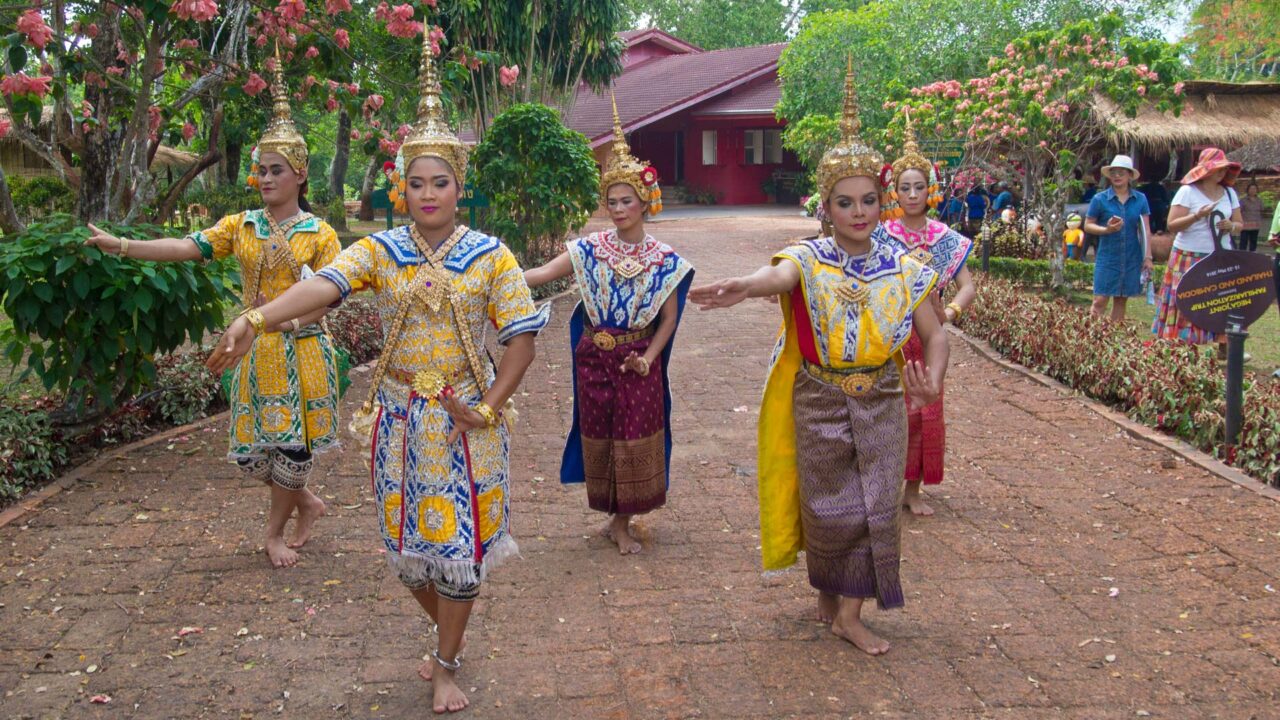
In addition, traditional dances are performed here, the history of mat weaving is presented in the museum, Khanom Gin (Chinese noodles) are prepared for you to try, or games of the old Chong people are introduced. A very interesting visit to learn about the province’s history and culture.
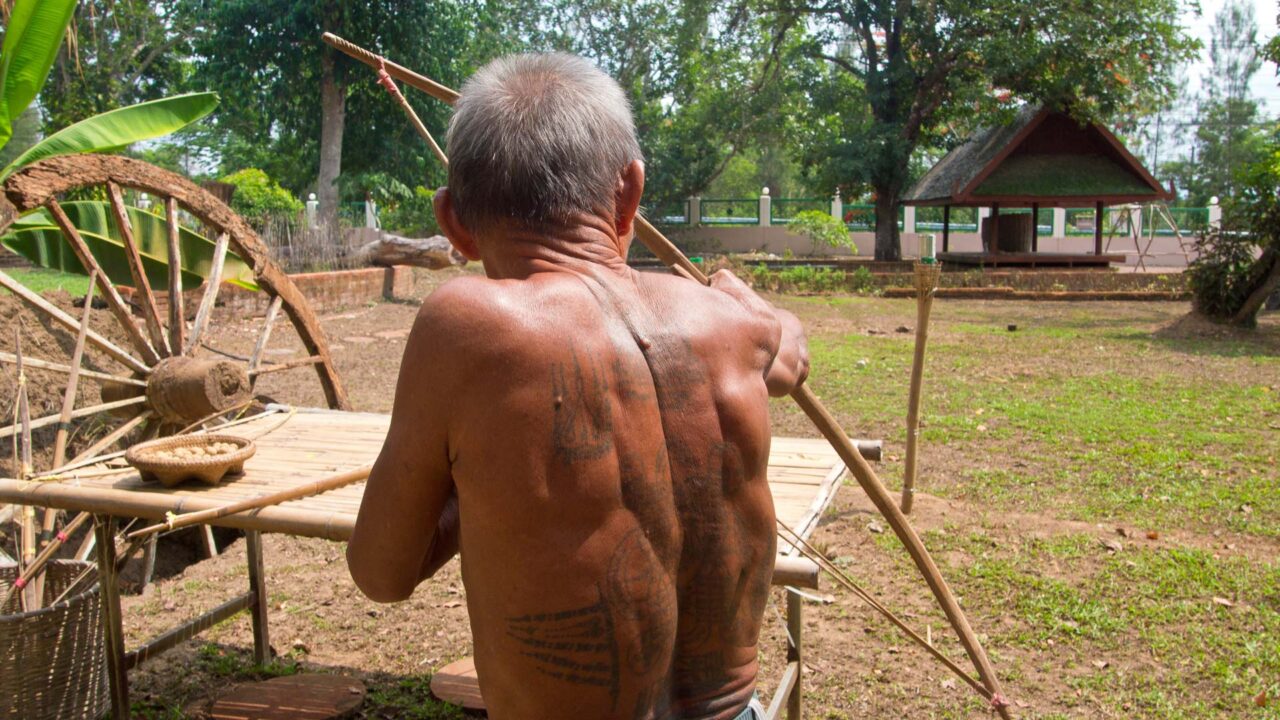
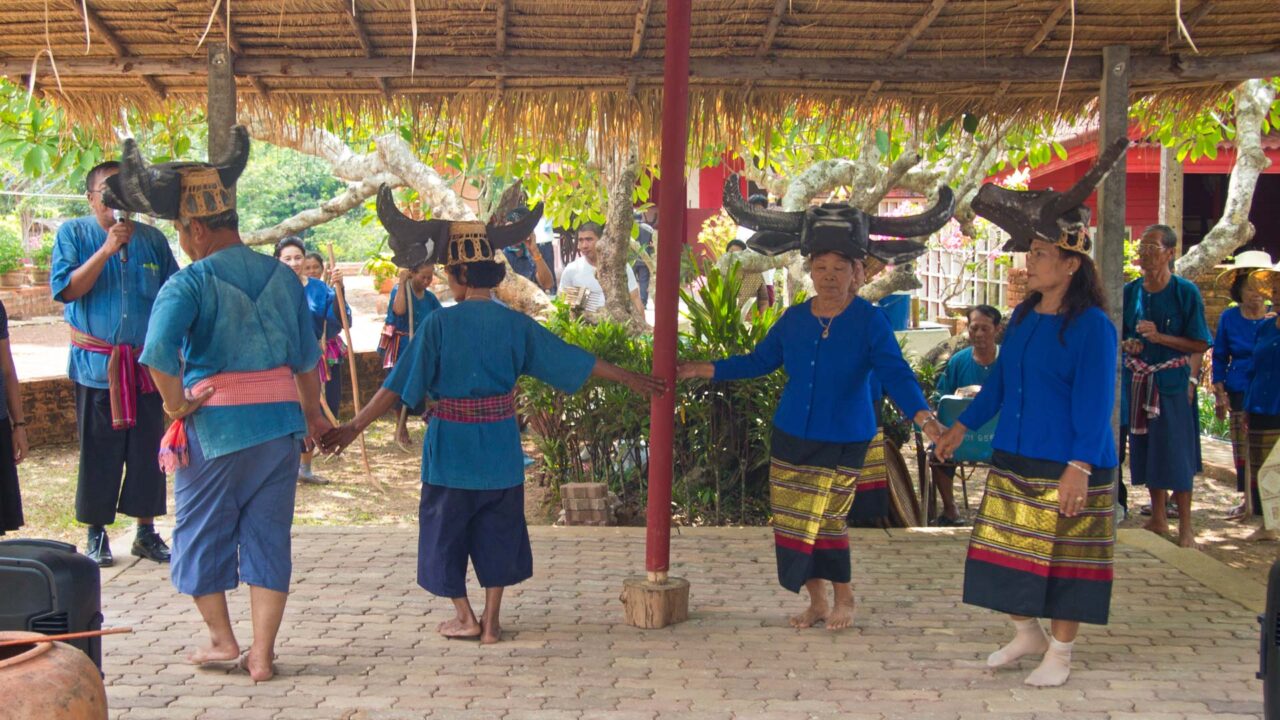
In addition, the famous fruits of Chantaburi, such as Mangosteen, Durian, and Rambutan, are grown on the grounds. You can pick them fresh from the trees and eat them. You can’t get fresher fruit anywhere else, and even the Durian doesn’t taste so bad to me in that case.
During the week, Wang Suan Ban Kaeo is open daily from 8.30 AM to 4.30 PM. To visit the grounds on weekends or with groups, you should register in advance.
7. Catholic Church
Chantaburi has a relatively large Catholic community by Thai standards, and therefore offers visitors the largest Catholic church in Gothic style in all of Thailand. You can find it on the western bank of the Chantaburi River.
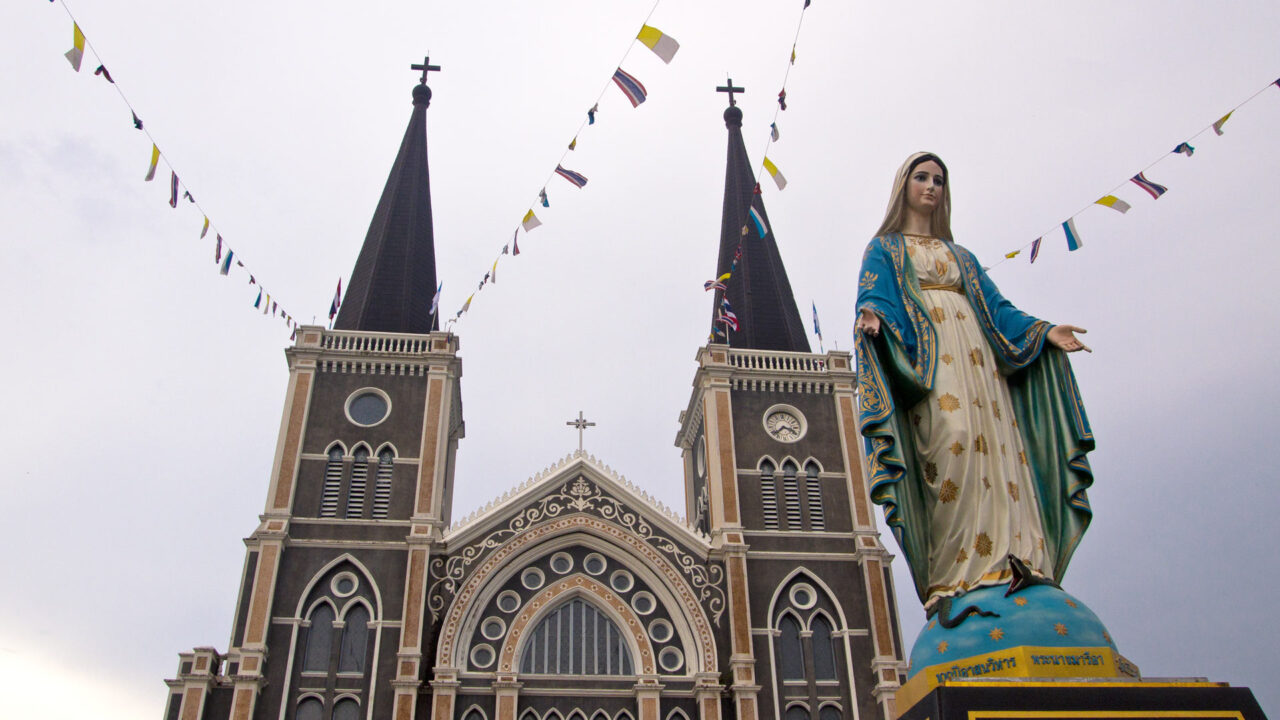
The proper name of the church is Mary Immaculate Conception Cathedral of Chantaburi. Today, the church is one of the city’s landmarks.
The current church was built in 1905, after the four previous versions became too small for the congregation. By the way, the first church was already built in 1711.
The interior of the Gothic church is charmingly decorated, and the ceiling resembles the bow of a ship. It’s truly a beautiful piece of architecture that you should take a look at before taking a stroll through the Chantaboon Waterfront Community.
8. Chantaboon Waterfront Community
Along the Chantaburi River stretches the Chantaboon Waterfront Community. This is a very old part of the city with restored old buildings and plenty of charm.
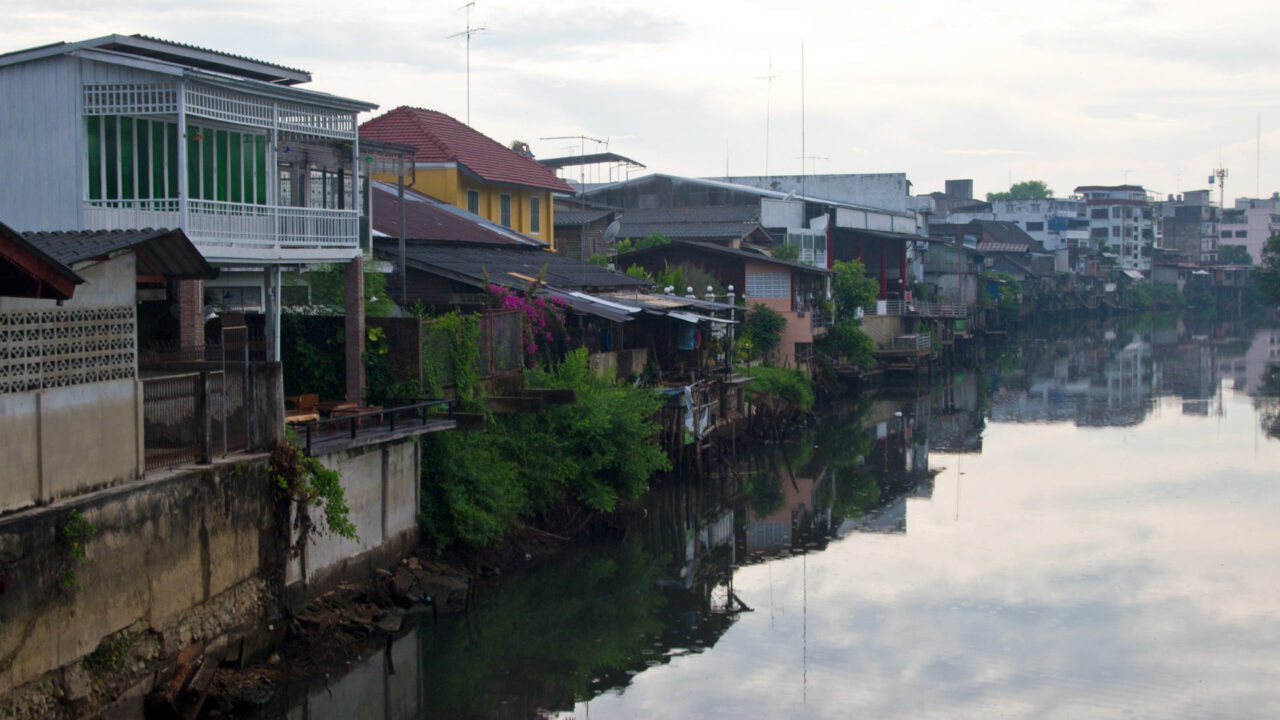
About 300 years ago, many of the city’s inhabitants (who consist of Thais, Chinese, Vietnamese, and Khmer) began trading all kinds of goods along the river.
Today, you can still discover many of the old houses during a walk, some of which are historically protected and cannot be demolished.
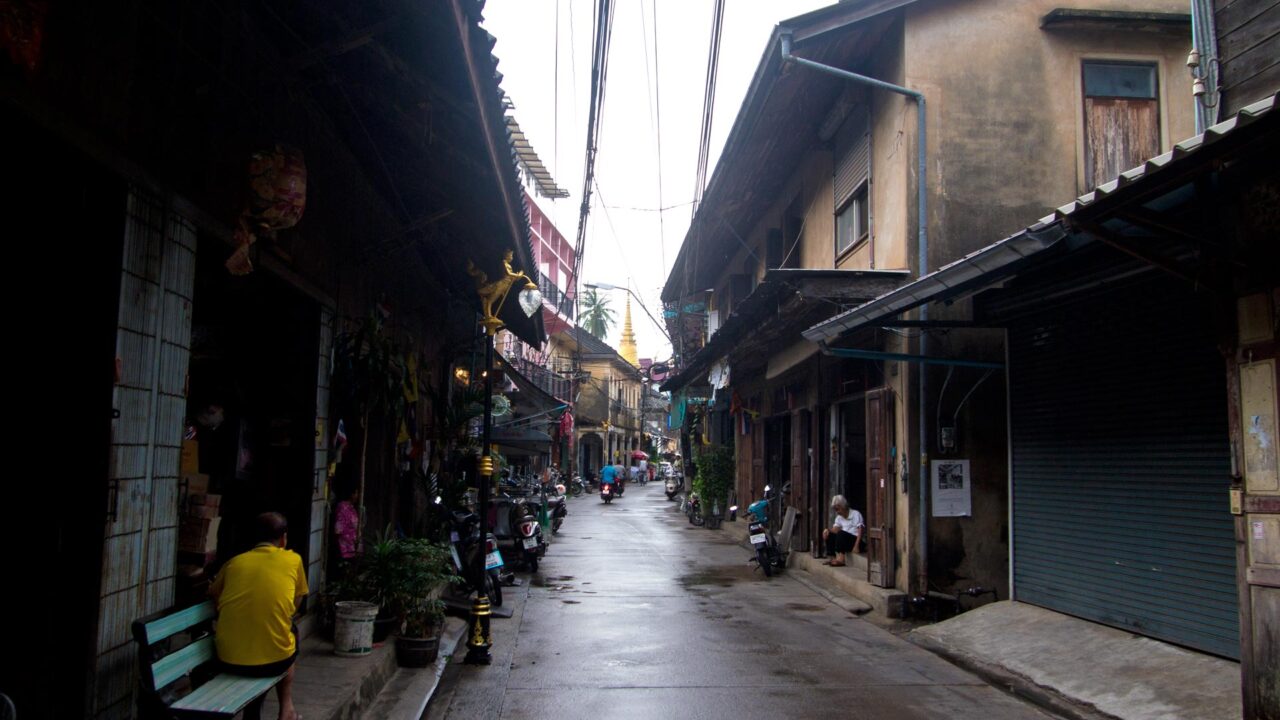
Here you will find many small shops, motorcycle or gemstone workshops, small galleries, nice hotels and cafés, for example the Historic Inn, and fantastic restaurants with a view of the river.
You will also find some Chinese temples in the old town, which are particularly used by the Thai-Chinese community.

If you visit the Chantaboon Waterfront Community on the weekend, then on Friday, Saturday, and Sunday there is also a Walking Street that runs through the old town. Here you will find various stands with fruits, souvenirs, clothing, and all kinds of local food.
I can only recommend a visit to the old town of Chantaburi to everyone. Great and charming atmosphere.
9. Wat Bot Muang
At the end of a walk through the old town of Chantaburi, Wat Bot Muang is located on a hill. The large golden Chedi can also be seen from afar through the alleys of the Chantaboon Waterfront Community.
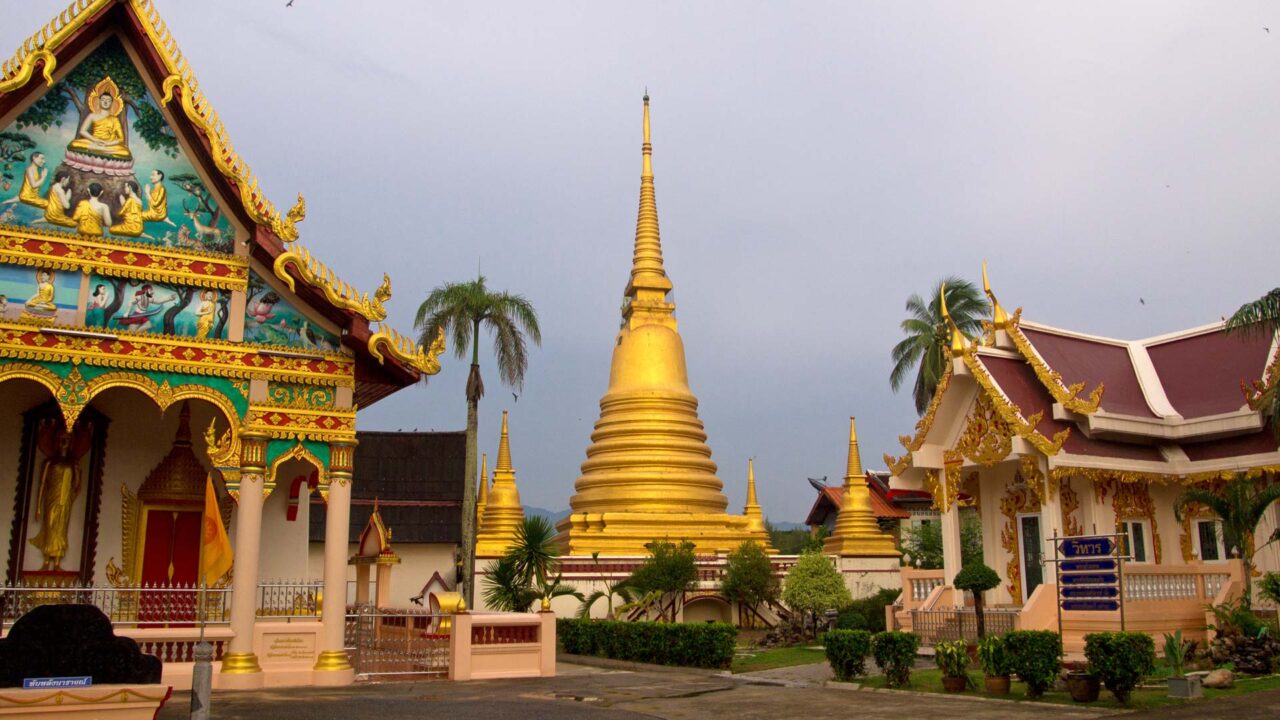
It is believed that the temple was built during the Ayutthaya period. A few monks live on site, and the main temple, Phra Ubosot and the golden Chedis are really very nice to look at.
From the smaller golden Chedi, you also have a great view of the river and a temple on the opposite bank. I can only recommend a brief visit in combination with the old town.
How to Get To Chantaburi
Chantaburi does not have its own airport. If you’re traveling from Europe by plane, it’s best to arrive via Bangkok. You can compare connections, prices, and tickets at Skyscanner.
There are several bus connections from Bangkok to Chantaburi. From the Ekkamai Bus Terminal, in the east of the city, several buses depart daily to Chantaburi. You can easily reach the Ekkamai Bus Terminal by using the BTS Skytrain. Once on site, you can buy a ticket for about 250 Baht per person or conveniently book it online in advance with our partner 12go.asia. The journey to Chantaburi, which is roughly 245 kilometers away, takes about 4 hours.
Info: Alternatively, you can also book a private taxi or a minivan from Bangkok, but this is the most expensive option and is only worthwhile if you are traveling with many people.
Have you ever been to the province or city of Chantaburi? Do you have any other sightseeing recommendations? We look forward to your feedback in the comments!
Many thanks to the Tourism Authority of Thailand, which invited us on this trip. As always, our opinions and recommendations are our own and were not influenced by the invitation.

Tobi
Hi, I'm Tobi, author, passionate travel blogger and founder of this blog. I've been traveling the world a lot since 2013, mostly in Southeast Asia, but sometimes also in Europe. The Thai island of Koh Phangan has become my home base when I'm not traveling. Find out more on our About Us page.